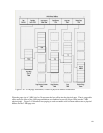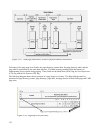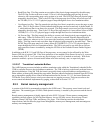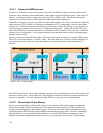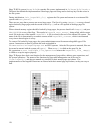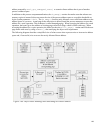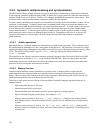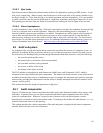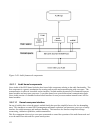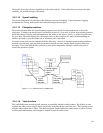5.5.3.6 Memory area management
Memory areas are sequences of memory cells having contiguous physical addresses with an arbitrary length.
The SLES kernel uses the buddy algorithm for dealing with relatively large memory requests, but in order to
satisfy kernel needs of small memory areas, a different scheme, called slab allocator, is used. The slab
allocator views memory areas as objects with data and methods. Most of the kernel functions tend to
repeatedly request objects of the same type, such as process descriptors, file descriptors, and so on. Hence,
the slab allocator does not discard objects, but caches them so that they can be reused.
The slab allocator interfaces with the page frame allocator algorithm, Buddy System, to obtain free
contiguous memory. The slab allocator calls the kmem_getpages() function with a flag parameter that
indicates how the page frame is requested. This flag diverts the call to get_zeroed_page() if the
memory area is to be used for a user mode process. As noted before, get_zeroed_page() initializes the
newly allocated memory area with zero, thus satisfying the object reuse requirement.
5.5.3.7 Noncontiguous memory area management
In order to satisfy infrequent memory requests, SLES kernel uses noncontiguous memory area allocation
methods which will reduce external fragmentation. The SLES kernel provides a mechanism via the
vmalloc() function where non-contiguous physically memory can be used that is contiguous in virtual
memory.
To allocate memory for kernel use, vmalloc() calls __vmalloc() with a gfp_mask flag that is
always set to GFP_KERNEL __GFP_HIGHMEM. __vmalloc() in turn calls
vmalloc_area_pages(), which will allocate the PTEs for the page requested.
5.5.4 Process address space
The address space of a process consists of all logical addresses that the process is allowed to use. Each
process has its own address space, unless it is shared. The kernel allocates logical addresses to a process in
intervals called memory regions. Memory regions have an initial logical address, a length, and some access
rights.
This section highlights how the SLES kernel enforces separation of address spaces belonging to different
processes using memory regions. It also highlights how the kernel prevents unauthorized disclosure of
information by handling object reuse for newly allocated memory regions.
Some of the typical situations in which a process gets new memory regions are:
• creating a new process (fork())
• loading an entirely new program (execve())
• memory mapping a file (mmap())
• creating shared memory (shmat())
• expanding its heap (malloc()) and for growing its stack
All information related to the process address space is included in the memory descriptor (mm_struct)
referenced by the mm field of the process descriptor. Memory descriptors are allocated from the slab
allocator cache using mm_alloc(). Each memory region, represented by the vm_area_struct
structure, identifies a linear address interval. Memory regions owned by a process never overlap.
To grow or shrink a process’s address space, the kernel uses the do_mmap() and do_unmap() functions.
The do_mmap() function calls arch_get_unmapped_area() to find an available linear address
interval. Because linear address intervals in memory regions do not overlap, it is not possible for the linear
128




